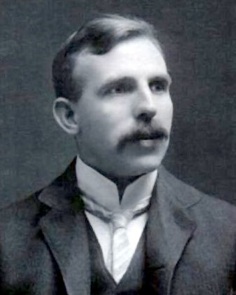
The Engineer, especially in its early years, was very much a practical journal; the stuff of nuts and bolts, big lumps of iron and steel, rivets and steam. There wasn’t much space for the world of pure science, although applied mathematics, of course, was always well to the fore. So it was with an almost audible grinding of mental gears that the journal took a stab at describing the world inside the atom and what it might mean to engineers in 1920.
This was the height of the discoveries of the quantum mechanical revolution in physics. Ernest Rutherford had split the atom in 1917, and three years later gave a lecture at the Royal Society describing some of his findings. The Engineer sent a representative to the lecture, who found himself wondering on what significance the discovery of the electron, in particular, might have for engineers.
The article starts with an attitude which is still common among engineers: that a ‘practical man’ might ‘echo the opinion which has of late found vigorous expression in some quarters, that such research is “important”, but he is content to leave it to a small band of enthusiastic workers whom he is inclined to regard with something between indifference and the semi-contemptuous tolerance which he accords to people who are not “practical”.’ But, the article adds, it should be obvious that Rutherford’s discoveries were bound to ‘affect our practical lives and perhaps to alter the whole aspect of human life and activities,’ and this would happen ‘probably sooner rather than later.’
The aspect of sub-atomic physics which most excited this reporter was the role of the electron in bonding. The confirmation that atoms are composed of a positively-charged nucleus surrounded by negative electrons ‘serves to show how then atoms, particularly when built up into a crystal, are linked together — a linking which we normally dismiss with the vague term of “cohesion”.’ The electron is the linking agent and responsible for this cohesion, the article adds, ‘and there if no property of matter which is of more fundamental importance to an engineer than this property of cohesion.’
Understanding why electron-mediated bonds give materials their bulk properties was likely to open up a new world of high-performance materials, the article says. ‘We might well look forward to an era of engineering materials which should surpass the achievements of the present era of “alloy steels” as much as the iron age surpassed the bronze age,’ it says.
The report also touches on the possibilities of the energy locked inside the atom, saying that this is indicated by the heat generated by radium as it disintegrates by radioactive decay. ‘The lively imagination of Mr HG Wells,’ it says, rather dismissively, ‘has familiarised us with the idea that some day it might be possible to utilise this internal energy of the atom for destructive purposes, and he has painted us a lurid picture of the destruction wrought by such “atomic bombs”.’
‘More peaceful speculation has suggested that in this great store of energy we shall ultimately find an inexhaustible source of power, not only solving the problem of the exhaustion of coal and oil, but for ever relieving the human race from the burden of physical toil.’ We’re still waiting for that one.




Nanogenerator consumes CO2 to generate electricity
Whoopee, they've solved how to keep a light on but not a lot else.